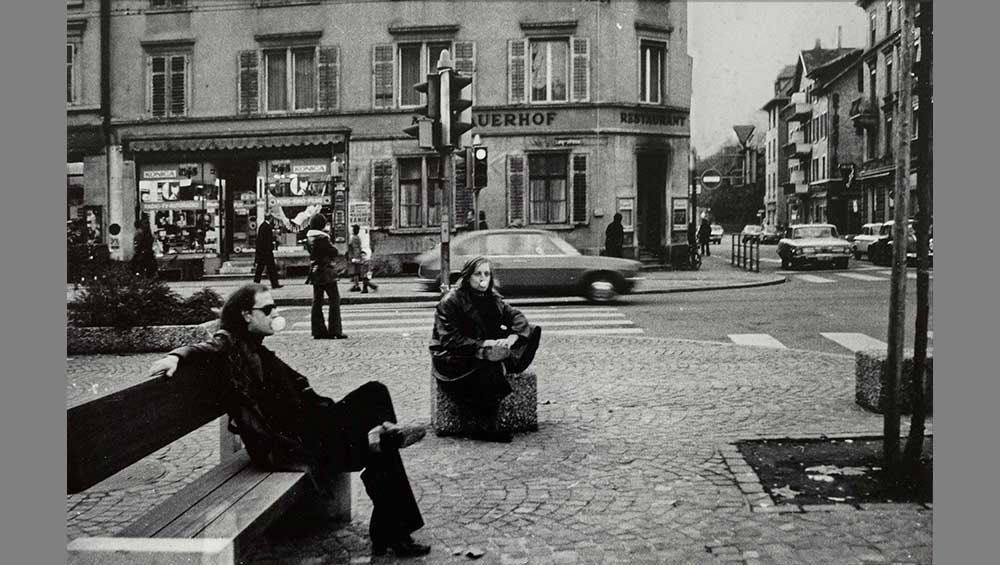
Urs Luthi & David Weiss, Lazy Days, 1974/2018. lnkjet print on paper. Courtesy Galerie Oskar Weiss, The Estate of David Weiss and courtesy Urs Luthi.
Masi Lugano, Switzerland
28 September 2025 – 1 February 2026
by BETH WILLIAMSON
Ascending the steeply inclined zigzag mountain pass to the Swiss village of Carona is akin to gradually entering a dreamscape. The higher you climb, the closer you become to this village idyll. Nestled between Monte San Salvatore and Monte Arbostora, Carona boasts breath-taking views of the Ticino mountains and Lake Lugano. Slipping backwards in time, this was once a village of artists, musicians and writers, and the setting for a thriving creative community. The creative roots of Carona reach back to the early 1900s when it was also a refuge of sorts, where intellectuals found its peace and quiet an inspirational setting for free thinking and creativity. It was in 1917 that the knife-maker Theo Wenger bought the house Casa Constanza, which soon became home to his family – his wife Lisa Wenger-Ruutz, the painter and writer of children’s books, and his daughter Ruth who married the writer and painter Hermann Hesse. Little landscape paintings by Hesse from 1921-26 are among the most exquisite in this exhibition at Masi Lugano. Portraits of Theo Wenger and Hesse set the scene for this period.
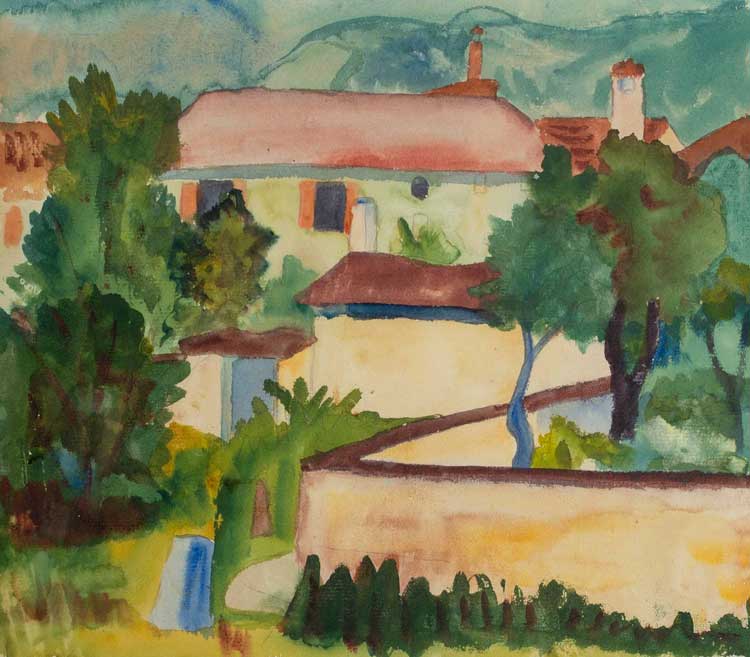
Hermann Hesse, Carona, (Carona, 28 July 1923), 1923. Ink on paper. Private collection.
Later, activity was focused on Casa Aprile, bought in 1969 by Theo Wenger’s grandchildren, the German-born Swiss surrealist artist Meret Oppenheim and her brother Burkhard, and later entrusted to Oppenheim’s nephew, Christoph Wenger. Early photographs of Casa Aprile, portraits of Oppenheim and a wonderful set of prints by her bring the Carona of the late 60s alive from the very beginning of the exhibition. Oppenheim’s circle of friends included, among others, Leonor Fini, Max Ernst and Daniel Spoerri. Christoph Wenger and his friends made Casa Aprile a focal point for the cultural scene and young artists whose ideas and projects sparked an energetic artistic scene in the village. It was this community that, in the late 60s and on through the 70s, provided creative freedom and nourishment for the young Swiss artist David Weiss. Later known for his decades-long collaboration with fellow artist Peter Fischli and a practice that played with the quotidian aspects of life in film, photography and sculpture, Weiss began his creative life in Carona and a community of artists the likes of which would never be seen again. As a guest at Casa Aprile, Weiss found himself among a community that included fellow travellers Anton Bruhin, Maria Gregor, Matthyas Jenny and Willy Spiller. Weiss spent time drawing, recording and observing as part of this constellation of creative people. As Tobia Bezzola, the director of Masi Lugano puts it: “For Weiss, it was a time of silent growth, observation, drawing and dreaming, which now affords us a glimpse of the lost paradise lauded by Meret Oppenheim.”
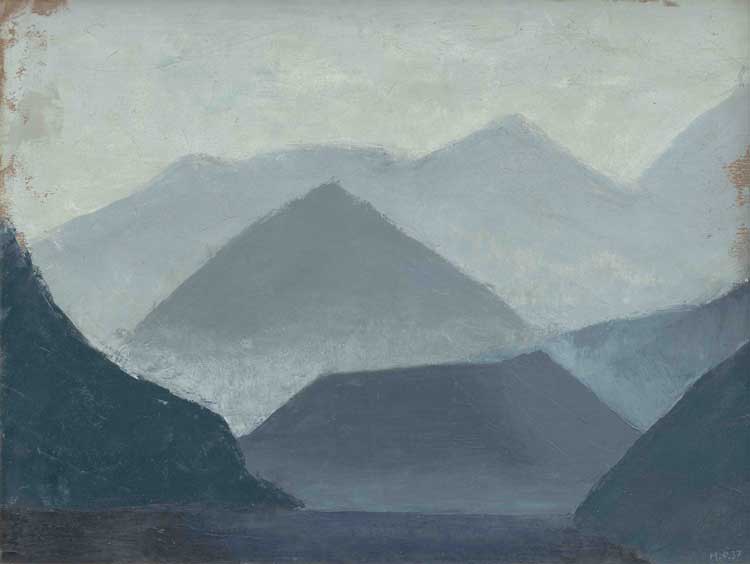
Meret Oppenheim, Mountains opposite Agnuzzo (Ticino), 1937. Oil on cardboard. Private collection.
© 2025, Prolitteris, Zurich.
Having acknowledged the history of Carona, the exhibition at Masi Lugano traces the years from 1968 to 1978, a decade in which friendship and exchange provided succour for dialogue and freedom that nurtured a creative community. Spending extended periods in Carona did not mean that Weiss forgot his home city of Zurich but instead reflected on it through newly formed sensibilities. The village became a place of transformation and passage, while Casa Aprile was a living organism, shaped and reshaped, holding the traces of those who passed through its rooms. Weiss shared this experience with other artists, such as Bruhin, who created the atmospheric Carona Soundscape 18.3.76.
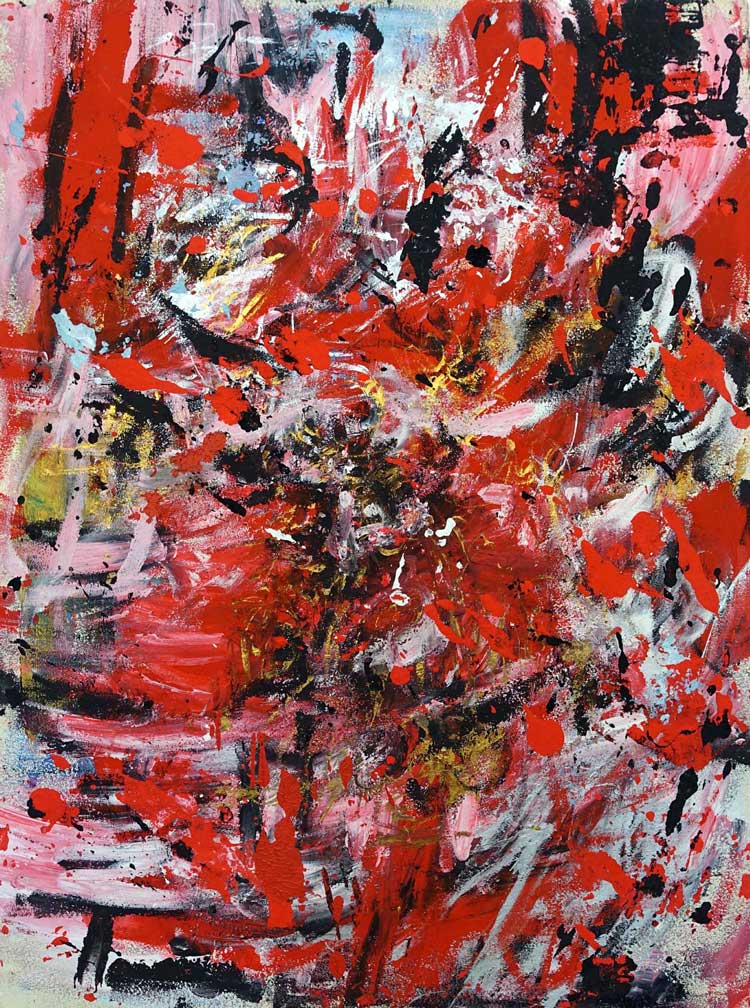
Esther Altorfer, Untitled, 1980. Mixed media on handmade paper. ART-Nachlassstiftung Bern,
Courtesy DuflonRacz Galerie. Photo: Paola Caputo, Esther Altorfer. © 2025, ProLitteris, Zurich.
Esther Altorfer worked with light in the village and her work shifted from restrained monochrome to dramatic colour while in Carona. Iwan Schumacher created visual sequences from the walk to Santuario della Madonna d’Ongero, the 17th-century pilgrimage church in the woods of Carona. Peter Schweri worked with colours in motion while Spiller captured the atmosphere of the village and the community through photography. Intertwining art and life and shifting perceptions about memory and perception, Weiss and his creative co-conspirators lived in a way that dissolved boundaries between the animalistic and mechanical, between the human and the elemental. Carona became a microcosm of wider countercultural movements attracting the likes of, for instance, the psychologist Timothy Leary with his interest in psychedelic drugs and altered states of consciousness.
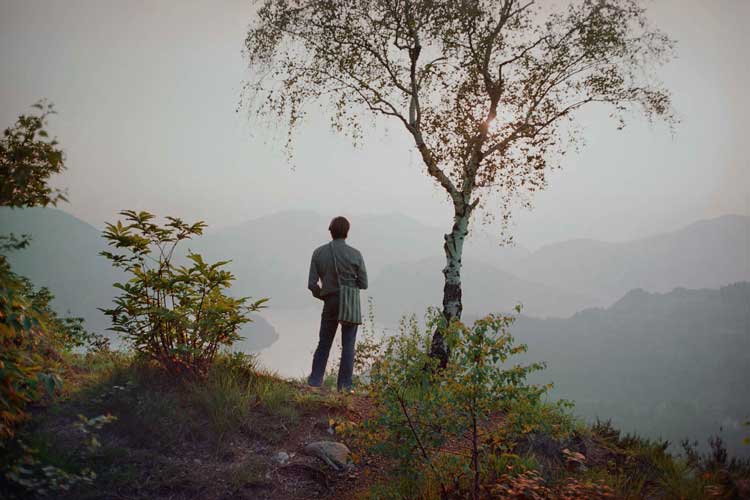
lwan Schumacher, Carona, Edition II, 1977/2025. Inkjet print. Private collection. Courtesy lwan Schumacher.
Drawing was key for Weiss and this exhibition is impeccable in its sharing of the rhythmic qualities of his daily drawing, tracing marks and a non-narrative visual development. Wandlungen (Metamorphoses) was developed between 1975 and 1979 with more than 80 sequences of drawings. Here, the slippages and tensions between forms in these series recall the narrative flow and structure of Wenger-Ruutz’s children’s tales that went before it. This is not to suggest a direct influence but a flow of sensibilities inherent in Carona and its creative communities old and new. Independent publishing was another practice that emerged as part of communal life in Carona. The literary magazine Nachtmaschine first appears in 1976, founded by Jenny and rooted in American Beat culture, despite its Swiss location. Independent publishing was another mode of resistance to conformity, of dialogue between like-minded creative individuals and carving out alternative ways of making and living. It is further evidence, if it were needed, of a pressing need for freedom and independence. The facsimile editions made available in the exhibition give a strong sense of the urgency and materiality of making that imbued this venture.
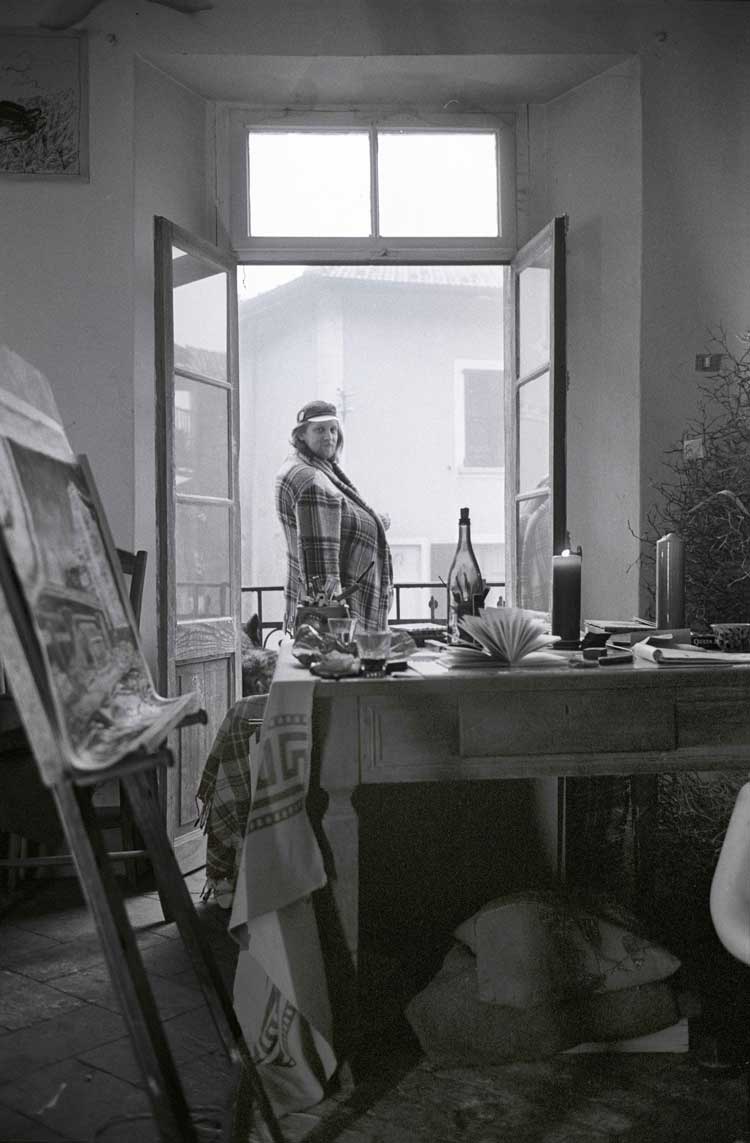
Willy Spiller, David Weiss in Casa Aprile, 1975. Photograph. Courtesy Willy Spiller.
What we have in this exhibition is a truly vital sense of time and place. An almost perfect balance of context, presence, archive, artwork and facsimile comes together in a space of equilibrium where visitors can truly experience something of Casa Aprile and Carona during that decade that was so crucial for Weiss’s development and the mature artist he became. Not only that, it creates a genuine sense of this group of people living, breathing and making together in a significant act of creativity and community, enriched by friendship and trust, suffused with generosity and dreams. What they left behind is what is shared with us in this exhibition. From Penelope Margaret Mackworth-Praed’s delicate net drawings to Spiller’s moody photographs, from Schweri’s bold Kingkong fiction heads to Altorfer’s colour-filled imaginary worlds, from Oppenheim’s rich and abundant practice to Weiss’s endless drawings, all stand as fragments of the Carona community, repositories of the dream of Casa Aprile, and pictures of a story whose energy and effect will continue to tell it anew.